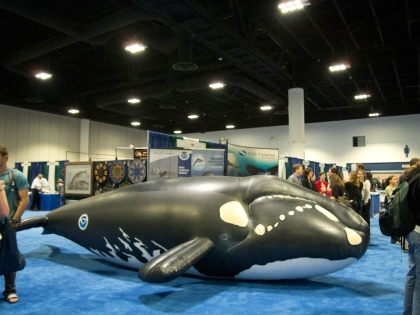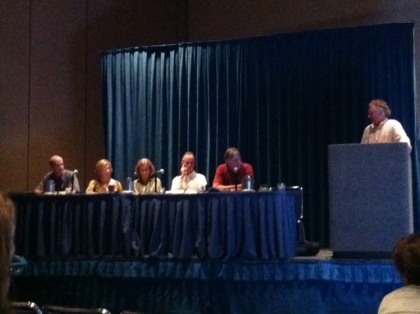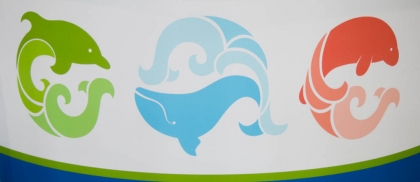With 351 oral presentations and 664 research posters, I definitely did not have a shortage of information over the week of the 19th Biennial Conference on the Biology of Marine Mammals. The conference brought together marine researchers from all over the world to share current research, conservation and education of this select group of the oceans inhabitants.
I attended the conference as a volunteer; which involved working a few shifts around the Tampa Convention Centre and attending talks while not working. My main goal for the conference was to gain an overview of the current marine mammal research; important focus areas and the gaps in research. The conference was made up 5 days full of ‘speed talks’. These speed talks are a 15 minute summary of a study by the researchers. After 5 full days of 15minute talks, not only was my notebook full, but also my brain!
The talks covered a variety of areas of research and my choices of talks to attend centred around habitat and distribution, statistical methods and conservation. These included talks such as ‘direct measurements of humpback whale feeding in relation to vertically-stratified prey abundance’ (Ari Friedlaender), ‘Bayesian inference of a historical genetic bottleneck in a heavily exploited marine mammal’ (Joseph Hoffman), and ‘A special abundance habitat model for a common Gulf of Mexico cetacean: do oil/gas rigs matter?’ (Paula Moreno).
The conference hosted a Gulf of Mexico Oil Spill panel discussion that provided a status update of the recovery process and impact findings. This was perfect timing as I am heading to New Orleans next week to help with Healthy Gulf, and organisation aimed at Gulf recovery. The Deep Water Horizon oil spill released around 200 million gallons of oil over 86 days in April, 2010. Five US states were effected including; Texas, Mississippi, Louisiana, Florida and Alabama. Tom Roslyn, advisor for the Natural Resource Damage Assessment process, gave an explanation of how the assessment works and what stages they are in currently. 1 billion dollars was provided by BP upfront for the restoration work and a cooperative assessment between BP and NOAA provides a shared fact set for the insurance and trial in the future. Teri Rowles, marine mammal scientist, gave a summary of research about dolphin populations effected by the spill including strandings, bottlenose distribution studies, and physical impairments caused by the oil. Pete Peterson, University of North Carolina, spoke about the lessons learned from the Exxon Valdez oil spill in Alaska in 1989. The discussion provided a brief update on the work that is continuing in the Gulf and will be for years to come.
The conference was a great opportunity to learn about the new technology, data analysis techniques, collaborations and research topics that are being used to gain more insight into the lives and life histories of marine mammals around the world. I am very excited at the prospect of attending and potentially submitting an abstract for the 20th Biennial Conference on Marine Mammals in 2013 at home in Dunedin, New Zealand!
Thank you to Bruce Shephard, Coleen Christensen and Carroll Shephard for their generosity and support. Thanks to Cheryl Bonnes, the volunteer co-ordinator for the conference, for all her help.




